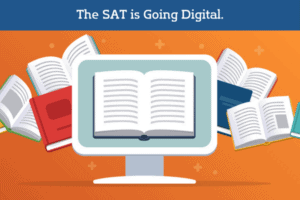Pandemic pandemonium
2020 was a year that incoming college freshmen will never forget. Lockdowns in response to that pesky virus known as Covid-19 made it nearly impossible to engage with the whole college process. To simply take the SAT or ACT was fraught with difficulty as college applicants found it hard just to find a suitable location. The reality was that all students—had more known about it—could have taken the remotely proctored CLT (more on that later).
There were widespread imposed restrictions (lockdowns, masks and eventually forced injections) to try to “stop the spread” and, as a result, almost all colleges across the U.S. announced a “test-optional” policy for applicants.
Even selective or top-tier schools followed suit.
Is it all just “too good to be true” for applicants?
It seemed like it was a gift from the heavens, where for the first time ever, there were no entrance tests.
You can just imagine how you might feel to have discovered you had hit the college jackpot. If you’ve ever thought you were a “bad test-taker,” or if you find yourself procrastinating and letting test dates pass you by time and again, then this was indeed great news.
But was it?
Test-optional. Who stands to benefit?
Look, it does seem fantastic that you would no longer need to test, and you could still get into college, but you do have to ask yourself something very, very important.
When changes are made, it’s always important to stand back and wait for the dust to settle. Changes due to the threat of Covid-19 came into play very quickly. But they stayed around. Why is that? The most important question to ask is, “Who stands to benefit?”
Or, to put it another way, is test-optional a poisoned chalice?
You could ask yourself, what’s the point of colleges continuing test-optional policies? Perhaps there is a completely different agenda.
Post-pandemic, it’s noble to think that schools have kept the possibility of test-optional college entry because they have the best intentions for the students. But remember that at the end of the day, colleges are big business. If colleges didn’t greatly benefit from what should have been a temporary change, they wouldn’t have chosen to continue with the questionable program.
Let’s break it down.
- With the test-optional policy came a tremendous increase in applications.
- Increase in applications can mean $80 – $100 per application fee.
- School rank is related to test scores (not the number of applicants). Colleges receive their national rankings based on incoming freshman SAT and ACT scores. Having large numbers of test-optional candidates means the school is protected, and it can keep its overall average high. Low (and non-existent) scores would not be included and would not lower the average to lower the college rank.
- When you delete test scores from the ranking equation but still have considerable increases in applicants (and $), the school can reject more students and boost its rankings to be regarded as a better and more selective school.
- Test-optional policy helps the college climb the ladder of the coveted U.S. News & World Report rankings.
- While you think, " Great, easy entry to college, " it’s possible that test-optional institutions have been raking in hundreds of thousands of dollars (even millions for some top schools).
- You will probably not be surprised to learn that colleges like test-optional due to the prospect of attracting students who can and will pay full freight.
The bottom line is this: It’s about money and perceived position in the college market. If a college really wanted to help all students and truly level the playing field, we would see them adopt a test-blind policy.
The job of College Admins is to preserve rankings to satisfy alumni and donors and justify any increases in the cost of attendance or staff raises. This adulterated testing system benefits the school, not necessarily the applicant. In short, test-optional encourages more students to apply. The rankings grow due to the lower admission rate from the increased applications received. The ranking is therefore calculated using higher scores from fewer test-score submissions, which equals higher rankings. Colleges love to reward these (test-score submitting) students with unique scholarships—even full rides!
Without a test score
When there’s no test score, the job of admissions officers is more stressful. It’s a very hectic process to evaluate students in the absence of purposeful data points, which used to be common to all applicants. The ability to compare “apples with apples” is the very foundation of standardized tests. On the contrary, admins know that the award of GPAs is far from standardized or consistent. A 4.0 from one school can never be the same as at another, since a GPA has a very subjective element and schools weigh and calculate scores differently. The test-optional policy created a surge of applicants and ultimately overwhelmed the admissions officers, especially at selective colleges.
False claims
There are, of course, opponents of standardized tests who proclaim that SATs and ACTs favor the wealthy. What they don’t understand is that it is the standardized nature of these exams that makes them the only fair way to compare all students equally. A standardized test has standardized questions and standardized (and objective) answers, which serve as a solid basis for comparison.
A benefit of these tests is that anybody can learn to beat them by following repeated or recurring patterns.
The same cannot be said for affluent (wealthy) students in a test-optional system, who may have unfair advantages: their unequal opportunities brought about through higher income levels, may see them submit stellar resumés, made possible through participation in expensive extracurricular activities and receipt of prominent letters of recommendation.
A return to testing
Top-tier schools did make a return to the testing protocol when MIT reverted to its testing policy. MIT’s chancellor, Steve Relyea, said the move would “level the playing field” and permit more students to get a “high quality” degree. He noted, in particular, that underserved communities often don’t have the luxury of IB and AP classes in their high schools. Tests serve to “…identify socioeconomically disadvantaged students who lack access to advanced coursework or other enrichment opportunities.”
CLT: A viable alternative test you probably haven’t heard much about
You could say it’s a well-kept secret, but the word is most assuredly getting out. Since its inception in 2015, the popularity of the CLT (or Classic Learning Test) has steadily increased. Numbers are climbing steeply because of the nature of the tests, which could give you the edge in your quest for college. One of the features of the CLT is it has always offered a remotely proctored option. While the number of students who take the CLT is currently a small percentage of those who take the SAT and ACT, it is a viable alternative rapidly gaining traction with colleges and students alike.
Failures of the test-optional system
The test-optional policy was supposed to create a more diverse application pool. Even with the barrage of new applicants, schools have only seen a 1% increase in diversity. Yes, this policy decision has made applying to college more straightforward and more accessible to a more significant number of students. However, one of the byproducts of having no application discretion has led to a higher dropout rate. But there’s more to it than that.
What they don’t tell you about test-optional
It really does seem like a ruse when you find out these two significant points.
- Colleges can only add a small percentage of test-optional students. And…
- Scholarships are generally tied to test scores.
It's always better to submit a test-score
Over the past few years, a lot of false hopes have been raised as a result of the test-optional rule. Many have erroneously thought that a selective or Ivy League school could be attainable without having to submit an SAT or ACT score.
Always remember that you will be at a disadvantage without including the results of your standardized tests (SAT, ACT, or other) because colleges still favor students who have strong test scores over those who did not submit one.
A viable alternative to the SAT or ACT is to take the CLT. It can be a better option and arguably a better test, so please, do yourself a favor and check the CLT out.
Don’t take the wrong (test-optional) chance
Are you willing to take the chance and lose out to somebody who submits their scores? Your chances of acceptance can increase as much as 250% over applicants without a score.
Applying for college is a very important step in your career and in your life. When you analyze the recent changes, you can see that how you approach your applications does make a huge difference.
The ground rules are there for you to either exploit to your advantage or, as many have been hoodwinked into believing, you can take the easy way out and just submit a resumé. My question to you is, do you really think it’s worth it? Learn test-taking skills. Do the hard yards. Do the tests and submit your scores. Remember, you can cherry-pick your best scores with Score Choice and Super Scoring. Play the game the best way you can.
What questions to ask if you decide to go test-optional?
Here are the questions Kim Farley of the CLT suggests families ask when planning to apply test-optional:
- Are your policies different for homeschoolers?
Read the fine print on this one. Some colleges exclude homeschoolers or put additional barriers to entry for home-educated students. - Are the same merit scholarships available to both those who choose to submit test scores and those who do not?
Some colleges only give merit with test scores; others restrict their top-tier and competitive scholarships to a specific test score, and some will base merit on GPA. - Is the acceptance percentage for students who don’t submit scores comparable to those who do?
Some colleges will say they are test-optional but prefer candidates with test scores. It is worth noting that the stats will show you if your chances might be better with a score than without. - Does my state have scholarships that require a test score?
Many state-funded scholarship programs require a test score. Be sure to read the qualifications that fit your specific circumstance, e.g., homeschoolers may have additional requirements to earn scholarship funds. - Does my intended major require a test score?
Some majors, such as nursing, engineering, or education, require you to submit test scores. If you do not submit, you may be admitted to college but not into your intended program. Sometimes, these are state requirements that the college cannot waive. Check to see if this limitation is applicable in the state where your program is located. - Will placement testing be required if you don't submit test scores?
At some colleges, you will not be scheduled for classes until you take an exam like the Accuplacer. This can delay your registration, and you will still have to take a test. Only this time, you lose the luxury of being able to choose the test you take and submit.
Testing gives you leverage
Don’t fall into the test-optional trap. It really is too good to be true and benefits the college more than it benefits you. I don’t blame you if you relished the idea of opting out of the ACT or SAT. You have to ask yourself if you really want to leave your future to chance because you took the easy way out and didn’t want to put in the work.
The truth is that many students, even Valedictorians, bomb tests like the SAT, ACT, and CLT. You can beat the system and take the future into your own hands by learning test-taking skills, sitting some tests, and, of course, submitting test results.
You have an excellent opportunity to stand out from other candidates. Thousands upon thousands of students will choose the easy way out and not take the time to learn how to beat these very beatable tests. Tests like the SAT are logic and reasoning tests and not about IQ or based on high school content.
You’ll be learning and building a different and very valuable skillset to get you college-ready, such as critical thinking, and you’ll use those skills again and again in your professional life. While standardized test-taking skills are not generally taught at school, with some intention, time, and repetition, you can rise to the top and secure yourself a bright future. Maybe you’ll attend your dream college and even get a free ride.
Why submitting test scores can be your golden ticket to college!
The good news is that these tests can be beaten. You can learn the recurring patterns, shortcuts and test-taking techniques and answer questions in 30 seconds or less. So instead of putting yourself at a disadvantage by not submitting scores, learn to ace these tests and have colleges come to knock on your door, begging you to enroll






